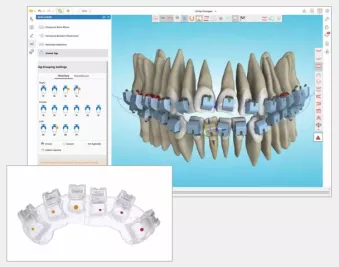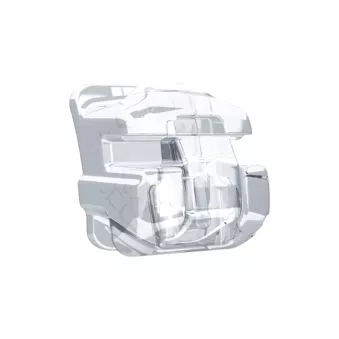
A smile makes a difference in overall health and success. Your smile is the first thing that others notice about you. If you do not have the smile you have always wanted, now is the time! There are so many different options available with today’s technology!
My name is Dr. Jennifer Buchanan, and my orthodontic practice has been in McKinney, Texas for 25 years. Throughout my career, it has been such an honor and a blessing to help over 8,000 patients and their families with their smile. Now, I am treating the second generation of patients, children of the patients I treated as teens, which has been very fulfilling. I treat every type of malocclusion including crowding, crossbites, underbites, overbites, and spacing. I specialize in difficult cases that would normally require jaw surgery, tooth extractions, headgear, expanders, or a Herbst™ appliance. *
Technology has changed so much over these last 25 years. My office always stays up to date with the most current advances in orthodontic technology. Here is a breakdown of the different types of braces and how we use them in our practice.
Traditional Twin Metal Braces
Early in my career, I used traditional twin metal braces. Traditional twin metal braces can straighten teeth; however, if a patient has crowding, crossbites, an overbite, or underbite, I would also have to utilize expanders, headgear, extractions, Herbst appliances, and/or jaw surgery to correct their malocclusion. Traditional twin metal braces can also create more patient discomfort since they use heavier forces.
Traditional Ceramic Braces
Ceramic braces are clear braces that are utilized when a patient wants braces to be less noticeable. Ceramic braces are more fragile than metal braces and are usually recommended for adults or older teens. If a patient participates in sports, metal braces are usually recommended over clear ceramic braces. Traditional ceramic braces also have limitations, like a traditional twin metal braces if a patient has crowding, crossbites, an overbite, or an underbite. Additional treatment methods of expanders, headgears, tooth extractions, Herbst appliances and/or jaw surgery would need to be used to correct the malocclusion when using traditional ceramic braces. Additionally, there can be more patient discomfort with these traditional ceramic braces.
How Lingual Braces Work
Lingual braces are braces that are placed on the inside of the teeth to make them less noticeable. One of the main difficulties of lingual braces is the lack of patient comfort. Lingual braces tend to irritate the tongue, which is highly sensitive, but that pain should diminish as your tongue gets used to it. Every time a tooth moves, the tongue senses this change and can easily become irritated and sore. This process of movement and corresponding irritation continues throughout treatment but, again, this should diminish over time as you get used to it. Additionally, lingual braces might need to be removed and replaced with traditional braces on the outside of the teeth, where they are seen, in order to achieve optimal results.
Damon Braces as a Non-Traditional Option
Damon Braces have revolutionized the orthodontic landscape! The Damon System uses light force, high-technology, shape-memory wires to move teeth more efficiently. Using Damon Braces can reduce office visits and treatment times to help you better manage your busy schedule. Damon Braces come in a metal or ceramic option. Further, Damon offers a clear ceramic option called Damon Clear, which some patients may prefer because they are less noticeable.
In many cases, the Damon System reduces the need for expanders, headgears, tooth extractions, Herbst appliances, and/or jaw surgery when treating many malocclusions (crowding, underbites, overbites, and crossbites). In my experience, it does not matter what age a patient is; Damon Braces is able to treat EVERYONE regardless of the difficulty of the case. And, because the Damon System uses light, gentle forces, these braces can help promote efficient tooth movement and help improve oral health by eliminating plastic ties.2 I have also observed that Damon Braces can shorten the time in treatment while creating wide, beautiful smiles.
How Damon Insignia Braces May Shorten Treatment Times
Insignia Damon Braces are customized braces using the Damon Braces technology of low friction and low forces. With Insignia Damon Braces, each patient has their dental record scanned into the computer. I am then able to customize and design each patient’s perfect smile using the latest digital technology. Insignia Damon Braces are like a custom designed suit made to fit only the patient it was designed for. Because of this innovation in customization, treatment time has been shortened an average of 6 months with Insignia Damon Braces, and fewer office appointments3.
About the Author
Dr. Jennifer Buchanan began her orthodontic practice in 1996 and has been creating winning smiles and supporting the McKinney community ever since. Dr. Buchanan earned her Bachelor’s Degree in Secondary Science Education at the University of Texas at Austin, then went on to attain her DDS and Master’s Degree in Orthodontics at Baylor College of Dentistry in Dallas.


